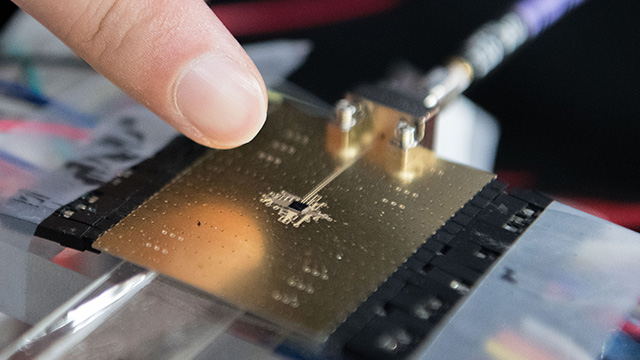
Researchers from Georgia Tech have successfully integrated the design of electronics with antenna to create a new type of millimeter wave transmitter. This method has significantly boosted the energy and spectrum efficiency of such designs. Scientists believe this technology could lead to future 5G applications with longer talk time and higher dates rates.
The new design has a few significant advantages over its predecessors. It allows for simultaneous organization of the millimeter wave antennas, as well as electronics. Because the hybrid device relies on conventional materials and traditional integrated circuit technology, manufacturing and packaging the device would not require any significant changes. Additionally, the co-design scheme permit fabrication of several receivers and transmitters in the same package or even on the same chip. This gives the device to potentially allow for multiple-input-multiple-output systems, in addition to boosting link diversity and data rates.
“In this proof-of-example, our electronics and antenna were designed so that they can work together to achieve a unique on-antenna outphasing active load modulation capability that significantly enhances the efficiency of the entire transmitter. This system could replace many types of transmitters in wireless mobile devices, base stations and infrastructure links in data centers.”
It is integral for the hybrid device to maintain a high-energy efficiency whether or not it is operating at its peak output power. Most traditional transmitters only enjoy high efficiency at peak power; at lower power levels, the efficiency can suffer dramatically. This is a particular problem with amplifying complex spectrally efficient modulators. Furthermore, most transmitters exacerbate their own efficiency degradation by adding the outputs from multiple electronics using lossy power combiner circuits.
The new design has more advantages besides energy efficiency. It also helps to facilitate spectrum efficiency, as it allows for more complex modulation protocols. This is potentially great news for anyone relying on 5G systems, as it will allow for transmission of a higher data rate within the same channel bandwidth.
Testing is currently underway for the variety of applications this technology could benefit, and the cross-disciplinary design seems to have a host of possibilities in front of it. Besides the obvious uses in the commercial field, the technology holds promising advances for base stations, or even replacing cables with wireless connections in large data centers. And thanks to its construction and design, commercial fabrication of this new technology should not pose any major issues for researchers.
